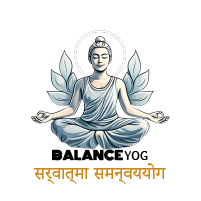Techniques of yoga for stress
16 September 2025Yoga offers various techniques that specifically target stress reduction and promote relaxation. These techniques combine physical postures (asanas), breathing exercises (pranayama), relaxation techniques, and mindfulness practices. Here are some effective yoga techniques for managing stress:
1. Yoga Asanas (Physical Postures)
- Balasana (Child’s Pose):
- Benefits: Calms the mind, relieves tension in the back, shoulders, and chest.
- How to: Kneel on the mat, sit back on your heels, and fold forward with arms extended or alongside the body.
- Savasana (Corpse Pose):
- Benefits: Promotes relaxation and rejuvenation, reduces muscle tension.
- How to: Lie flat on your back, arms and legs relaxed, eyes closed, and focus on deep breathing.
- Viparita Karani (Legs-Up-the-Wall Pose):
- Benefits: Improves circulation, relieves tired legs, and promotes relaxation.
- How to: Lie on your back with legs extended up the wall or supported on a chair, arms relaxed by your sides.
2. Pranayama (Breathing Techniques)
- Diaphragmatic Breathing:
- Benefits: Calms the nervous system, reduces anxiety, and promotes relaxation.
- How to: Sit or lie comfortably, place one hand on your chest and the other on your abdomen. Inhale deeply through the nose, allowing the abdomen to rise, then exhale slowly, letting the abdomen fall.
- Nadi Shodhana (Alternate Nostril Breathing):
- Benefits: Balances the left and right hemispheres of the brain, calms the mind, and reduces stress.
- How to: Sit comfortably with a straight spine, use the right thumb to close the right nostril, inhale through the left nostril, then close the left nostril with the ring finger and exhale through the right nostril. Repeat alternating sides.
3. Mindfulness Meditation
- Breath Awareness Meditation:
- Benefits: Increases awareness of the present moment, reduces stress, and enhances focus.
- How to: Sit comfortably, close your eyes, and focus on the sensation of your breath entering and leaving your body. When thoughts arise, gently return your focus to the breath.
- Body Scan Meditation:
- Benefits: Promotes relaxation by systematically bringing awareness to different parts of the body.
- How to: Lie down or sit comfortably, focus on each part of the body sequentially, noticing any sensations without judgment or reaction.
4. Yoga Nidra (Yogic Sleep)
- Benefits: Deep relaxation technique that reduces stress, anxiety, and promotes emotional well-being.
- How to: Lie down comfortably in Savasana, follow a guided meditation that leads you through different stages of relaxation and visualization.
5. Guided Relaxation Techniques
- Progressive Muscle Relaxation:
- Benefits: Releases tension from muscles and promotes relaxation throughout the body.
- How to: Tense each muscle group in the body for a few seconds, then release and relax. Start from the feet and work your way up to the head.
Tips for Practicing Yoga for Stress Relief:
- Consistency: Practice regularly to experience cumulative benefits and integrate stress-reducing techniques into your daily routine.
- Awareness: Pay attention to how your body and mind respond to different yoga techniques, and adjust your practice accordingly.
- Environment: Create a peaceful and quiet space for yoga practice to enhance relaxation and focus.
- Self-compassion: Approach your practice with kindness and without judgment, allowing yourself to fully experience the benefits of each technique.
By incorporating these yoga techniques into your lifestyle, you can effectively manage stress, promote relaxation, and improve overall well-being.




